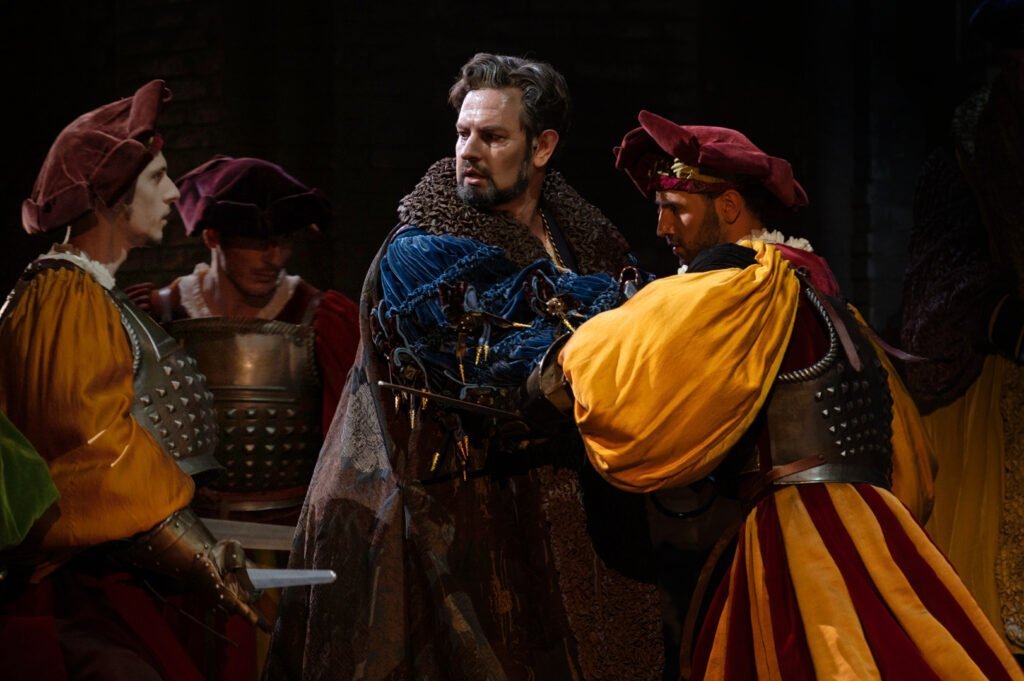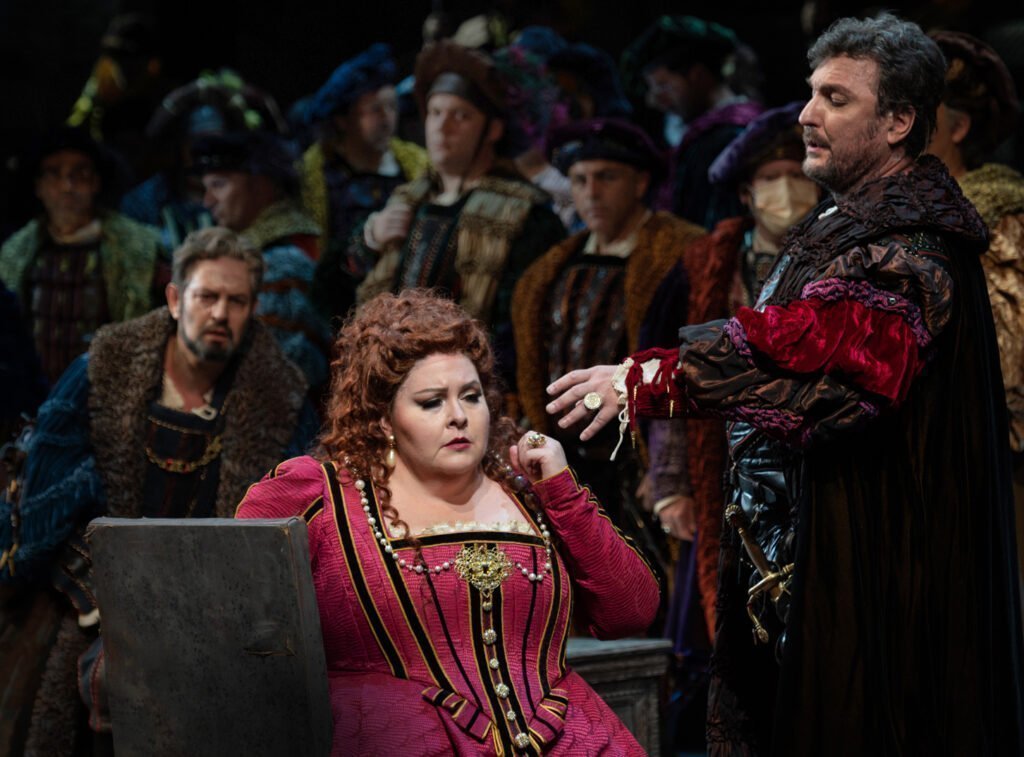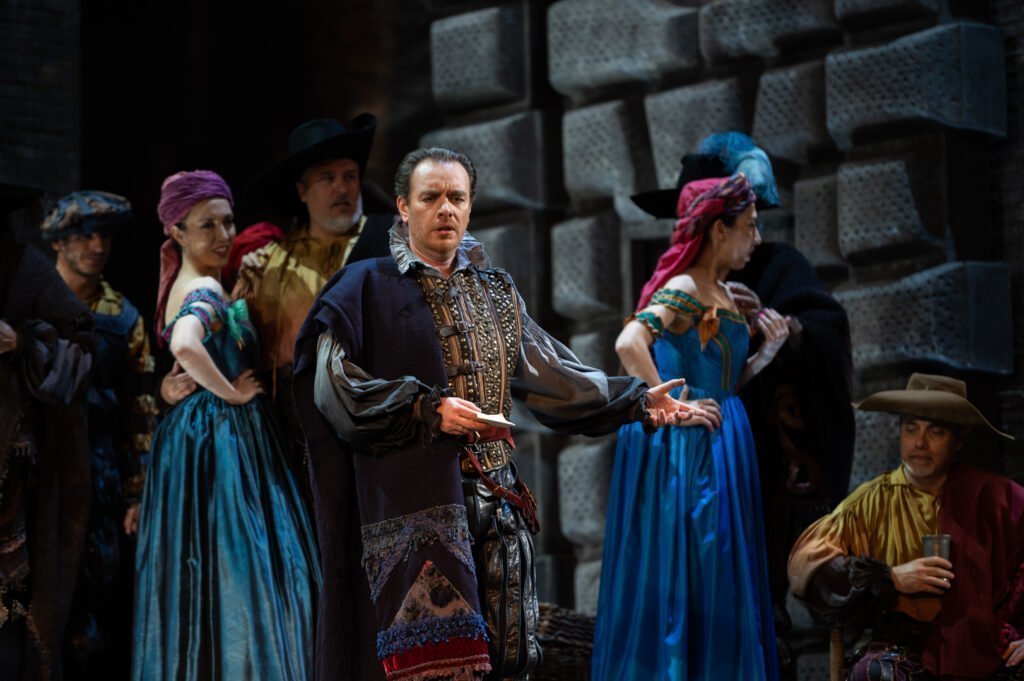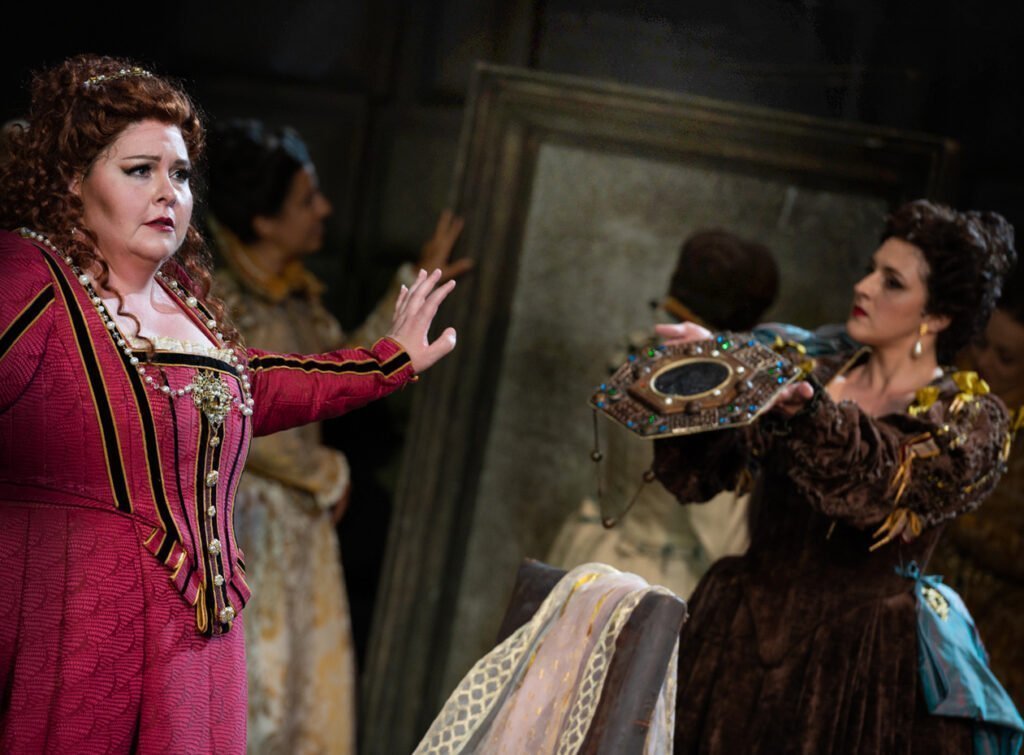Ernani
From the 3rd to the 31st of June 2022, the Opera Theatre in Rome presents Verdi’s Ernani, conducted by Marco Armiliato, directed by Hugo de Ana, with:
Ernani (Tenor): Francesco Meli
Don Carlo (Baritone): Ludovic Tézier
Don Ruy Gomez de Silva (Bass): Evgeny Stavinsky
Elvira (Soprano) Angela Meade
Giovanna (Mezzosoprano) Marianna Mappa
Don Riccardo (Tenor) Rodrigo Ortiz
Jago (Bass) Alessandro Della Morte
Music: 4****
Staging: 4****
Among Verdi’s early operas, Ernani is perhaps the most successful with the exception of the well-known Nabucco. Teatro dell’Opera di Roma, in coproduction with Sidney Opera House, stages an excellent version of this seldom-performed masterpiece. Compared to Nabucco and I Lombardi alla prima crociata, in Ernani the social and political elements essentially respect the personal dramas of the characters. In musical terms, this implies that a very strong quartet of singers is needed.
Ernani’s role was performed by Francesco Meli, whose interpretation was adequate for the character. His aria “Come rugiada al cespite” was well sung, although his voice did not deliver some of the high pitch notes at the highest level. In general, his performance was most appreciable in the intimate and delicate moments of the score.
American soprano Angela Meade left a great impression as Elvira. Her voice was very powerful in the most demanding moments, but also soft and warm, as required by the character. The aria “Ernani!… Ernani, involami…” was performed with great technique and sensitivity. Her contribution in the many ensembles present in the opera was also excellent (the final trio, just to cite one example).

Ludovic Tézier was an outstanding Don Carlo. As in other productions, the baritone here was the real “star” of the opera, especially in the third act, where the regal character of Carlo V was perfectly portrayed. Tézier’s noble and powerful voice was indeed stunning (his aria “Oh, de’ verd’anni miei” got the longest applause of the evening).
Silva was well performed by Russian singer Evgeny Stavinsky, both vocally and in terms of acting. The bass is not just the “villain” of the story. The full extent of his sadness for his unhappy love with Elvira is revealed in his first aria, “Infelice! E tuo credevi.” Stavinsky delivered the many human aspects of the character convincingly.
The remaining characters were also effective: Marianna Mappa as Giovanna, Rodrigo Ortiz as Don Riccardo and Alessandro Della Morte as Jago, all coming from the “Young Artist Program” of the Teatro dell’Opera di Roma.


As usual with a Verdi opera, the choir is not marginal. The chorus of the Rome Opera Theatre, directed by Roberto Gabbiani, delivered an excellent performance, with a memorable “Si ridesti il Leon di Castiglia,” one of the most famous pieces of the opera.
Special credit should be given to Marco Armiliato, who conducted the orchestra with the right tempo, not too slow, not too fast, and the right energy. Singers were always well accompanied and never drowned out, and at the same time, the culminant moments were very powerful, as they should be.
One of the reasons for the success of this edition was undoubtedly Hugo de Ana’s excellent staging direction. He reprised his own version of 2013, to show the true meaning of direction at the service of the opera (and not vice-versa, as unfortunately is very often the case). Indeed, we had the pleasure of witnessing a performance where all the elements and the gestures were functional to the story, and no ideas unrelated to the libretto were put on the stage. All the arias, duets, etc. were performed as they should be: the singers were the center of the attention with no distractions, which someone has disparagingly referred to as “static direction!” On the contrary, this “static direction” was highly effective as it allowed the audience to concentrate more on the characters and the story. Particularly impressive were the “still images” at the end of the acts, what one could describe as living pictures reproducing the most important and iconic moments of the opera. Movement on the stage was provided by a group of dancers. They were used by the director in appropriate moments (the dances at the beginning of the second and fourth act), and not just to perpetuate unscripted chaos.

In an opera such as Ernani, actualizations or “reinterpretations” of the subject are inevitably doomed to fail. Victor Hugo’s drama has no meaning if transposed into another space or in another time. The majestic sets and the lavish costumes in this production suggested perfectly the places and the epoch of the story (16th century Spain).
At the end, the audience gave a big and warm applause to all the performers, which is exactly what they deserved.
